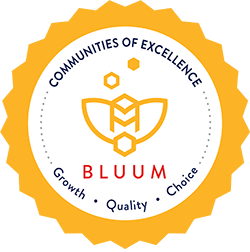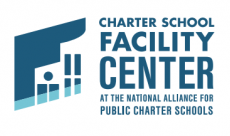A dozen jurisdictions provide public credit enhancement programs to reduce the borrowing costs of their charter schools. Credit enhancement can involve the substitution of a stronger third party’s credit, as in the case of a moral obligation pledge, other full or partial guarantees of repayment, or funding of specific collateral pledged for repayment, such as additional reserves structured into a loan or bond structure.
Four jurisdictions have credit enhancement programs involving a moral obligation pledge, although the program is not active in one of the jurisdictions. In a moral obligation pledge, a state or municipality promises or pledges to seek, but is not legally required to make, an appropriation out of general revenues to replenish a debt service reserve fund that has been drawn upon to meet debt service payments to bondholders in the event a borrower defaults. As such, the MO pledge effectively substitutes the credit strength of the state or municipality for that of the borrower, resulting in significant interest savings for lower-rated borrowers.
The remaining eight jurisdictions have other credit enhancement programs that provide credit support to charter school bond or loan financing in the form of guarantees or funded debt service reserves. Please refer to links to the National Alliance’s August 2020 publication, State Policy Snapshot: Facilities Financing for Public Charter Schools in Appendix B for details regarding credit enhancement programs in other jurisdictions.
Example: Idaho Moral Obligation Program
In April 2019, Idaho Governor Brad Little signed into law Senate Bill 1180, which created a state moral obligation program for charter schools in Idaho. As of July 2020, no Idaho charter school had yet accessed the program; however, charter advocates were seeking an advisory opinion from the State Supreme Court on behalf of the first prospective participant.
Eligibility
Charter schools apply to the Idaho Housing and Finance Association for issuance of nonprofit facility bonds and participation in the moral obligation program. To qualify, a school must provide the following items:
- Letter of commitment from a chartered financial institution, CDFI, or qualified underwriter or investment firm
- Evidence the school has been in academic, operational and financial good standing with its authorizer for the three previous years
- Annual budgets or cash flows (pro formas) that show the school’s debt service and facilities expense will be below the 20% of revenues facilities benchmark
- Evidence the school has operating reserves equal to 60 days cash and a debt service coverage ratio equal to or greater than 1.2x
- Satisfactory audit opinion
- Certification from the school’s board chair or treasurer as to reasonableness of financial and enrollment projections
- Evidence of strong academic results, including growth or proficiency above the state average on the Idaho Standards Achievement Test
Idaho’s moral obligation program is modeled in part after successful programs in Colorado and Utah. Eligible charter schools are required to deposit 12 months debt service into a restricted debt service reserve fund, similar to the general requirement for charter school tax-exempt bond issuance. The difference is that, pursuant to the MO pledge, the DSRF would be replenished by state appropriation if drawn upon and not replenished through other backstop sources. To lessen the likelihood of the need for appropriation, the Idaho program is structured with such a backstop source. The Idaho legislation established the public charter school facilities program fund within the state treasury, which will be funded from grants, gifts, appropriations, and required fees from schools that borrow through the program. At bond closing, schools are required to deposit a one-time fee equal to 0.5% of the issue par amount and an ongoing annual fee equal to 0.075% (7.5 basis points) on the bond’s outstanding principal balance. This backstop fund will be used, as available, to replenish any draws on the DSRF without the need for state appropriation.
In addition, the state’s moral obligation program requires use of an intercept mechanism, whereby the Idaho Department of Education pays all school revenues directly to the bond trustee, which sets aside funds for bond payment first and then transfers the balance to the participating school.
Of note, Idaho’s moral obligation program does not limit eligibility to investment-grade schools. As such, the credit support and resulting savings for schools can be significant. Depending on program structure, moral obligation bonds are generally rated one to two notches lower than the state’s general obligation bonds. With Idaho’s “AA+ and Aa1” rating from S&P and Moody’s, respectively, these MO bonds will have ratings significantly higher than schools could achieve on their own credit strength. It is important to note that schools are required to obtain an underlying borrower rating in addition to the MO rating for their bond issuance.
The first charter school has sought judicial confirmation for issuance through the program. It is unclear if judicial approval will be required for each school’s participation, which would increase legal fees and lengthen the period for issuance. These higher legal expenses will be offset by lower interest rates and a lower underwriter’s discount normally associated with higher-grade credits.
Related Articles in Undertsanding your Needs:
- Facility Refinancing: Preparation & Solicitation
- Assembling Your Facility Refinancing Team
- Facility Refinancing Guide to Underwriting
- Facility Refinancing: Credit Approval, Rating, and Marketing
- Facility Refinancing Guide to Closing
- Facility Refinancing Guide to the Bond Market
- Facility Refinancing Guide to Philanthropically-Enhanced Funds, Equitable Facilities Fund
- Facility Refinancing Guide to the CDFI Bond Guarantee Program
- Facility Refinancing Guide to Banks and Credit Unions
- Facility Refinancing Guide to Community Development Financial Institutions
- Facility Refinancing Guide to Philanthropically-Enhanced Funds, Facilities Investment Funds
- Facility Refinancing Guide to Replacement and Reporting
Legal Disclaimer:
Nothing in this material should be construed as investment, financial, brokerage, or legal advice. Moreover, the facts and circumstances relating to your particular project may result in material changes in the processes, outcomes, and expenses described herein. Consult with your own professional advisors, including your financial advisors, accountants, and attorneys, before attempting to consummate any transaction described in this material.

